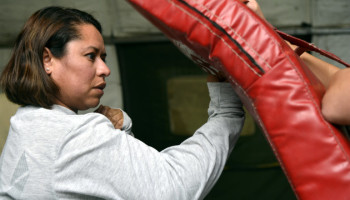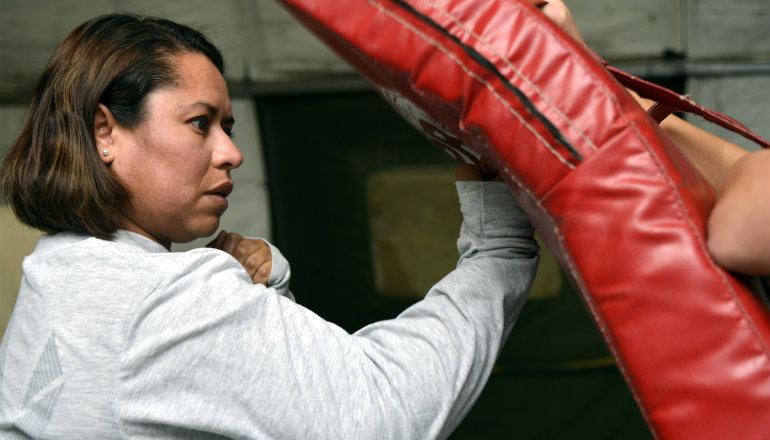 Reading Time: 5 minutes
Reading Time: 5 minutesThere was a time when I wanted to be a ninja. Okay, so I still want to be a ninja.
I grew up watching martial arts movies and admired the smooth, flowing movements. And, I admit, I thought being able to kick butt would be pretty cool, too.
Only, I was the shy, awkward, non-athletic kid. I never took karate, taekwondo, or kung fu. In fact, I’m not sure I ever even asked to. That’s how shy, awkward, and non-athletic I was.
But the desire to learn to move gracefully, to be confident I could defend myself, and to test my mettle stuck with me. That’s how at the age of thirty, I found myself walking into a dojo for the first time.
I had overcome my shyness (mostly). Although I had become pretty competent and confident in the gym, the awkward, not-athletic kid still lived inside me.
But I still wanted to be a ninja — so I took the plunge.
Let’s just say I was a little bit nervous (okay, I was shaking like crazy) when I walked through the dojo door, but starting martial arts as a grown woman was one of the best decisions I ever made.
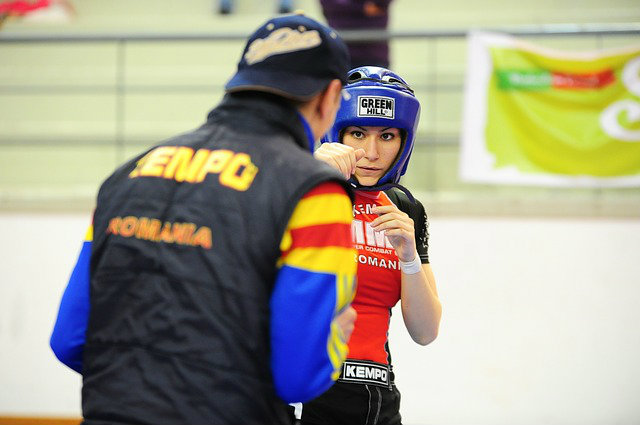
How I Found the Right Martial Arts School
Luckily, my sister-in-law had worked at a particular dojo years before so, even though I had no personal experience with the instructors or any of the students, I had a sense of comfort knowing my sister-in-law would not have worked for someone who didn’t provide quality instruction and good customer service. Between that and some criteria I set for myself, I had found my martial arts home.
Obviously, we don’t all have sister-in-laws who have worked at martial arts studios. But if you’re doing some research into studying martial arts, you can still ask around. The person you least expect might be able to guide you to best training facility in your area. You’ll want to do research online, ask around, and also visit any martial arts academy you’re consider before you commit to joining.
Looking back, there are three other bits of advice about choosing the right dojo or academy that I’d offer to a woman (or man) who wants to bring out an inner Zhang Ziyi. When evaluating where you want to begin your martial arts journey, ask the following questions:
1. Are There People That Look Like You?
Look at the pictures on the academy’s website. Do they only feature the super-athletic, hard-core fighters or are there pictures of everyday people?
And don’t rely on the website pictures exclusively. Observe a class and look for the same thing. Are there people like you? Do the instructors appear to give equal attention to everyone or do they dote on the more advanced trainees?
And most importantly, do you feel comfortable walking in the door? Listen to your gut. If something doesn’t feel right, then walk back out. This is one of the most important lessons I learned from studying martial arts. Trust your intuition.
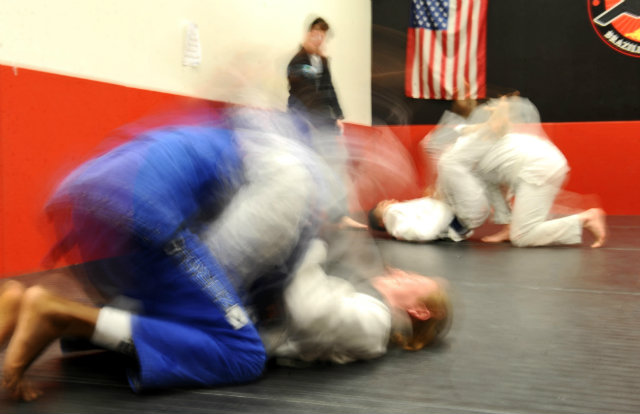
2. Does It Smell?
A martial arts class can be an intense workout. Participants will get sweaty and, depending on the style, there can be close contact with a heavy bag, punching mitts, or other class participants. Needless to say, cleanliness is important.
When you do a guest visit to the academy, does it appear that they clean the pads, bags, mats regularly? Are participants showing up in clean uniforms? I’ve seriously heard of grapplers who never wash their gis and use their nearly toxic levels of body odor as a secret weapon. I know I would tap out if caught in a headlock with my nose pressed into the armpit of a gi that’s never seen the inside of a washing machine.
If a dojo or academy smells “off,” then walk away. While the smell might be unpleasant, the lack of sanitation it reveals can be dangerous. Herpes gladiatorium, impetigo, ringworm, and methicillin-resistant staphylococcus aureus (better known as MRSA) are real dangers of close contact sports.
The risk can never be eliminated, but it can be greatly reduced with the right precautions. Trust me, you don’t want to have to explain that weird rash on your arm during your next business meeting, parent-teacher conference, or book club — and you certainly don’t want to risk contracting a serious disease.
3. Are Participants Having Fun?
I don’t mean laughing and joking during class. Learning a martial art takes a degree of discipline and concentration, and students need to show respect to their teachers, their dojo, and their art. The fun I am talking about is demonstrated in a mutual respect among all the participants.
Do they look like they are enjoying the process of learning something new and challenging themselves? Are the instructors giving useful and constructive feedback that helps the students improve? Are the students practicing with an open mind and not frustrated by unrealistic expectations set by the instructors, the other students, or themselves?
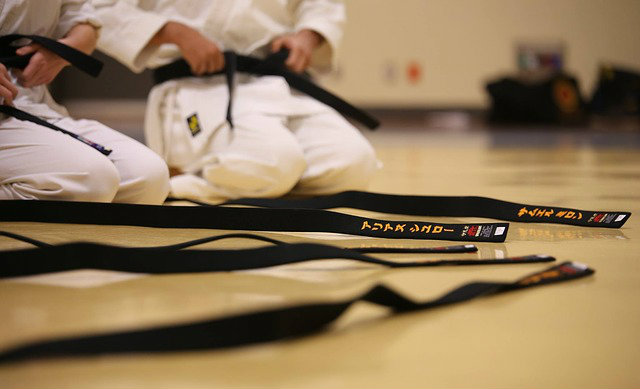
What Martial Arts Has Given Me
I never did become a ninja, which is okay. There is a definite lack of employment for mature female ninjas these days.
But by finding a dojo that was accepting, safe, and fun, I developed the ninja skills I dreamed about as a little girl. And I did it at the age of thirty, when many of us have given up on our childhood fantasies.
Really, that was the coolest part of the journey — realizing that pursuing my childhood interest was not only possible but even more enjoyable because I took it on as an adult.
